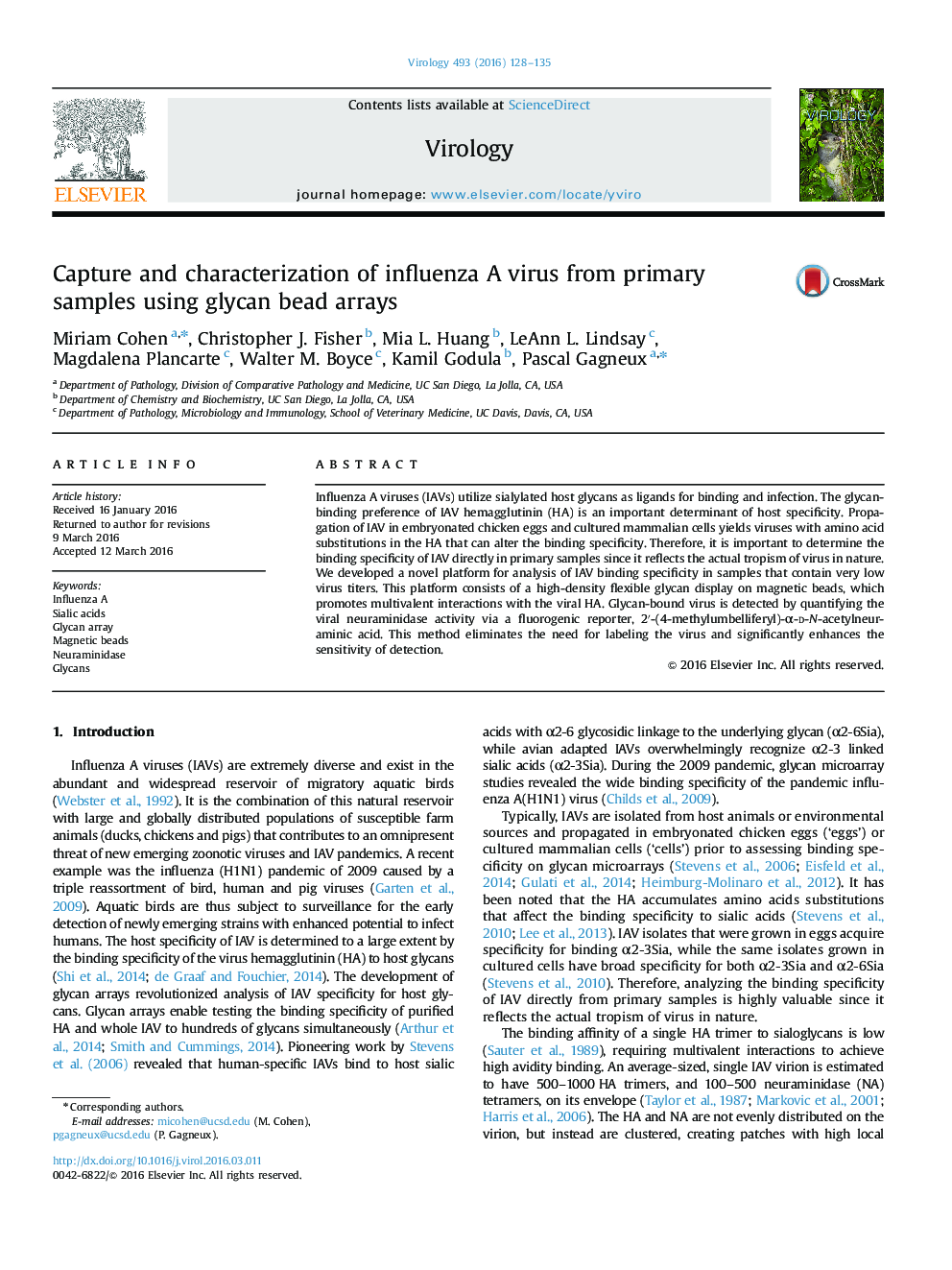| Article ID | Journal | Published Year | Pages | File Type |
|---|---|---|---|---|
| 6138557 | Virology | 2016 | 8 Pages |
Abstract
Influenza A viruses (IAVs) utilize sialylated host glycans as ligands for binding and infection. The glycan-binding preference of IAV hemagglutinin (HA) is an important determinant of host specificity. Propagation of IAV in embryonated chicken eggs and cultured mammalian cells yields viruses with amino acid substitutions in the HA that can alter the binding specificity. Therefore, it is important to determine the binding specificity of IAV directly in primary samples since it reflects the actual tropism of virus in nature. We developed a novel platform for analysis of IAV binding specificity in samples that contain very low virus titers. This platform consists of a high-density flexible glycan display on magnetic beads, which promotes multivalent interactions with the viral HA. Glycan-bound virus is detected by quantifying the viral neuraminidase activity via a fluorogenic reporter, 2â²-(4-methylumbelliferyl)-α-d-N-acetylneuraminic acid. This method eliminates the need for labeling the virus and significantly enhances the sensitivity of detection.
Related Topics
Life Sciences
Immunology and Microbiology
Virology
Authors
Miriam Cohen, Christopher J. Fisher, Mia L. Huang, LeAnn L. Lindsay, Magdalena Plancarte, Walter M. Boyce, Kamil Godula, Pascal Gagneux,
